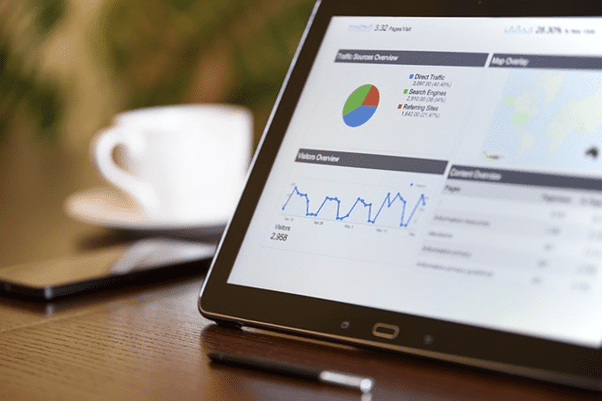The Definitive Guide to RPM
Introduction to Remote Patient Monitoring (RPM)
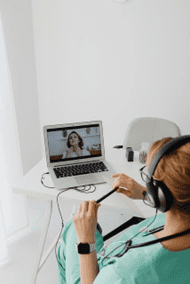
Remote Patient Monitoring (RPM) is a revolutionary technology that allows healthcare providers to monitor their patients’ health remotely using the latest medical devices and software. With these RPM tools, physicians can collect vital patient data such as blood pressure, glucose levels, and oxygen saturation in real-time, thereby improving patient outcomes while reducing costs for healthcare organizations. In this comprehensive guide on remote patient monitoring, we will explore how RPM works, its benefits over traditional healthcare services, and best practices for implementing an effective RPM program.
Definition of RPM
Remote Patient Monitoring (RPM) refers to the use of mobile medical devices and technology to gather patient health data. It is a subcategory of homecare telehealth that enables healthcare providers to monitor patients who are not physically present in the clinic or hospital. RPM allows for the collection of a wide range of health data, which may include vital signs like blood pressure and weight, alongside other essential patient data.
The benefits of RPM include improved patient outcomes, increased engagement, cost savings for healthcare organizations and reduced hospital readmissions. The process involves using various types of technology such as specialized monitors to collect health data from patients remotely. The collected information is then securely transmitted electronically to clinical staff who analyze it while providing feedback and support as needed.
Importance of RPM In Modern Healthcare
Remote patient monitoring (RPM) is rapidly gaining importance in modern healthcare. This technology allows clinicians to monitor patients’ health data from afar and take proactive measures before their condition deteriorates. RPM has been instrumental during the COVID-19 pandemic as it enables patients to receive care while minimizing contact with others.
RPM provides an opportunity for medical practices to generate additional revenue streams while improving patient outcomes. By implementing this model, clinics can build an established relationship with high-risk patients and offer specialized monitors that track specific conditions such as glucose levels or blood pressure remotely.
In addition, through RPM, patients can easily monitor their own health status using mobile medical devices and share them with their healthcare providers in real-time. This level of engagement empowers patients to be more proactive in managing their health conditions at home between office visits or after being discharged from a hospital stay. Ultimately, the benefits of remote patient monitoring are undeniable for both doctors and patients alike, leading to better quality care coordination and improved clinical outcomes across the board.
How RPM Works
RPM works by utilizing various technologies and devices to remotely monitor a patient’s health data, such as vital signs and blood pressure, which is transmitted to healthcare providers for analysis and reporting.
Technologies Used in RPM
Remote Patient Monitoring (RPM) relies on digital technologies to collect and transmit patient data. These technologies include sensors, wearables, and other devices that can track vital signs like blood pressure and oxygen levels. RPM also requires secure networks and cloud-based platforms to store, process, and share health information between patients and healthcare providers.
RPM also utilizes software tools like electronic health records (EHRs), analytics engines, and mobile applications for real-time monitoring of patients’ conditions. These tools enable physicians to receive alerts if there are any changes in the patient’s status or if medication needs adjustment.
Types of RPM Devices
Remote patient monitoring relies heavily on technological devices to collect and transmit patients’ health data. The most common RPM devices are those used for monitoring vital signs: blood pressure monitors, and pulse oximeters. These portable tools allow healthcare providers to track their patients’ physical functions remotely, providing real-time updates on a patient’s condition.
In addition to measuring vital signs, there are several other types of RPM devices available in the market today. Activity trackers can monitor a patient’s physical movements throughout the day and detect any changes that might indicate health issues. Similarly, specialized monitors can be used to track respiratory diseases or sleep apnea by tracking oxygen saturation levels in the blood.
Despite being technologically advanced, these modern RPM devices are designed with user-friendliness in mind. Patients do not need technical expertise to use them since they come with simple instructions that anyone can follow effortlessly. Moreover, some remote patient monitoring programs provide support through customer care representatives.
Benefits of RPM
RPM offers a range of benefits: improved patient outcomes, increased engagement, cost savings for healthcare organizations, and reduced hospital readmissions.
Improved Patient Outcomes
One of the major benefits of Remote Patient Monitoring (RPM) is improved patient outcomes. RPM allows for continuous monitoring and management of a patient’s health status, enabling earlier detection and intervention when necessary. This proactive approach to care can lead to better outcomes, such as reduced hospital readmissions and improved quality of life for patients with chronic conditions.
Studies have shown that RPM interventions can positively impact patient health outcomes by improving medication adherence, reducing emergency room visits, and providing timely medical interventions. By having access to real-time physiological data, healthcare providers can make informed decisions about treatment plans, resulting in better clinical outcomes for their patients.
Increased Patient Engagement
One of the significant benefits of Remote Patient Monitoring (RPM) is increased patient engagement. RPM enables patients to be more involved in their healthcare as they are frequently monitored remotely, which may help them understand and engage with their health data better. Patients can take an active role in managing their care by tracking vital signs readings such as blood pressure cuff, or oxygen saturation levels using specialized monitors.
RPM provides patients access to real-time health data that they can share with their physicians; this helps facilitate discussions about changes in the patient’s condition and enables providers to make timely interventions when necessary.
Cost Savings for Healthcare Organizations

Remote patient monitoring (RPM) allows healthcare organizations to reduce operating expenses and generate more revenue. By leveraging RPM technologies, healthcare professionals can eliminate some of the traditional brick-and-mortar costs associated with medical care. RPM also enables efficient care coordination and reduces readmission rates, ultimately leading to significant cost savings for providers. For instance, according to a recent study implementing an RPM program led to a 10% reduction in readmission rates over one year.
In addition to reducing operational costs, RPM streamlines workflows and improves patient outcomes. By shifting routine check-ups from in-person visits to remote monitoring platforms, health systems are better able to prioritize critical cases while simultaneously improving access for patients who need it most. As a result, healthcare organizations can optimize their resources by treating more patients efficiently and effectively through remote care delivery.
While there is still a cost associated with establishing an RPM program within an organization, the long-term benefits far outweigh these initial investments. Notably, Medicaid reimburses for select outpatient telehealth services like remote patient management programs that report data approved by the FDA or equivalent standards abroad as part of its Physician Fee Schedule on a state-by-state basis at parity with comparable site-of-service fees paid under Medicare’s physician fee schedule. This makes implementing an RPG program viable for many providers presently.
Reduced Hospital Readmissions
One of the most significant benefits of remote patient monitoring (RPM) is its ability to reduce hospital readmissions. As per a recent report from the University of Pittsburgh Medical Center, RPM has been effective in minimizing the risk of hospital readmissions. This advantage is especially crucial for patients with chronic conditions who require close monitoring regularly.
A systematic review found that RPM interventions can lead to reduced acute care use, eventually leading to fewer hospital readmissions. Reducing readmission rates through remote patient monitoring means that healthcare providers can provide high-quality care while reducing costs associated with unnecessary hospital stays and admissions.
Lower readmission rates are among the many advantages provided by using RPM for healthcare providers, along with efficient processing and monitoring severe medical conditions remotely. With potential cost savings and improved outcomes for both clinicians and patients, RPM may prove revolutionary in improving quality care delivery while also lowering costs over time.
Enhanced Care Coordination
One of the main benefits of Remote Patient Monitoring (RPM) is its impact on care coordination. RPM allows for consistent and frequent monitoring of patient symptoms and vital signs, enabling timely interventions and treatment adjustments. This can result in improved access to care and better outcomes for patients.
In addition, trend analysis of physiologic measurements and patient symptoms through RPM can facilitate early detection of health issues. Healthcare professionals can use this information to coordinate care more effectively, ensuring that patients receive appropriate treatment when they need it most.
Offering RPM programs to referring hospitals and specialists can also result in increased referral opportunities and patient retention. By providing these services, healthcare organizations can demonstrate their commitment to improving patient outcomes while also building stronger relationships with other providers in the community.
The RPM Process
The RPM process involves the use of devices to collect and transmit patient data, which is then analyzed and reported by clinical staff. To fully understand how RPM can benefit healthcare organizations, patients, and caregivers alike, read on for more details.
Devices Used for RPM
Various types of devices are used for Remote Patient Monitoring (RPM), including blood pressure monitors, weight scales, and spirometers. These devices collect vital information such as a patient’s heart rate, blood oxygen levels, and respiratory performance. Additionally, pulse oximeters and wearables are increasingly being used in RPM programs to capture more accurate health data from patients.
The collected clinical data is transmitted to healthcare providers so that they can monitor the patient’s health status remotely. Depending on their condition or illness, patients may be required to use multiple specialized monitors simultaneously for RPM services. The resulting data is analyzed by clinical staff, who can provide feedback to the care team about any potential issues requiring further attention or treatment.
Data Collection and Transmission
Remote patient monitoring (RPM) involves real-time collection of health data, such as vital signs and weight, from the point of care. This information is transmitted automatically through RPM devices to healthcare providers for daily monitoring of patients remotely. The data transmission process is automated and requires no intervention from the patient or their caregivers.
The use of RPM technology enables healthcare professionals to collect continuous physiological data on patients with acute or chronic conditions that would typically only be possible during periodic office visits. Real-time transmission ensures timely access to up-to-date health information about the patient’s condition, so prompt decisions can be made on appropriate care interventions if needed.
RPM devices are easy and generally free for patients to use after a proper patient training program has been completed. In addition, the high level of automation in the RPM process ensures minimal technical support is required throughout its implementation period leading to cost savings for healthcare organizations in comparison with traditional care delivery methods.
Data Analysis and Reporting
Remote Patient Monitoring (RPM) heavily relies on the collection, transmission, and analysis of real-time patient data. RPM devices use various technologies to capture vital signs like blood pressure, oxygen saturation levels, heart rate, and many more. The collected data is then transmitted through secure channels for storage in a data management platform.
The RPM process involves analyzing the collected patient health data to track any progression or regression in their condition. Through real-time monitoring and assessment of patient health status trends, healthcare providers can identify complications before they escalate into complex medical conditions that require hospital admissions.
Additionally, automated reporting features within RPM platforms allow healthcare staff to generate insightful reports based on analyzed patient data to help formulate informed decisions about treatment plans for better clinical outcomes. As such, remote monitoring tools provide an essential avenue for continuous care delivery even from afar while catering to timely support where needed.
Staff Training and Education

One of the critical components in the successful implementation of an RPM program is staff training and education. The medical staff should receive adequate training to understand how telehealth and RPM work, how to use devices, collect data, and provide patient education. It’s also essential that they know how to integrate this into their daily workflows efficiently. The importance of provider education cannot be overstated. It ensures the safe delivery of remote care through the use of a well-designed system with clear protocols.
Best Practices for RPM Implementation
To ensure the successful implementation of RPM, healthcare providers should choose appropriate patients, ensure proper training of patients and caregivers, design effective RPM workflows for secure data transmission and storage, and meet regulatory requirements like HIPAA compliance and state licensure requirements.
Choosing the Appropriate Patients
When it comes to implementing remote patient monitoring (RPM), selecting the appropriate patients is crucial. Not all patients are suitable candidates for RPM, and healthcare professionals must exercise caution when deciding who can benefit from this technology. To ensure that only the right patients receive RPM services, staff must carefully evaluate each patient’s medical history and current health status. Patient involvement in the decision-making process is also essential. Factors such as technological literacy levels and willingness to participate will determine their eligibility for RPM programs. With careful selection of participants, healthcare providers can leverage RPM technology more effectively and achieve positive outcomes while increasing patient satisfaction.
Ensuring Proper Training of Patients and Caregivers
Proper training of patients and caregivers is crucial for the success of any Remote Patient Monitoring (RPM) program. Patients need to be trained on how to use RPM devices correctly, as well as how to transmit data to their healthcare provider. Caregivers must also receive adequate training to support patients in monitoring their health status.
Effective patient and caregiver training can help increase acceptance and usage of RPM devices, leading to improved patient outcomes. The AMA Remote Patient Monitoring Playbook recommends involving clinical staff in providing this education through individual or group sessions. Furthermore, it’s important that the education material is tailored towards each patient’s needs, with an emphasis on how using remote monitoring will benefit them specifically.
Designing Effective RPM Workflows
Designing effective RPM workflows is essential to ensure the success of a remote patient monitoring program. The workflow should be tailored to a healthcare provider’s specific goals, such as reducing hospital readmissions or managing chronic diseases. Before implementing the workflow, it is essential to evaluate RPM vendors and identify best practices for protecting RPM data.
To design an effective RPM workflow, providers must choose appropriate patients and devices that are suitable for their needs. Staff should be trained to collect data effectively, transmit it securely, and analyze the results efficiently. Patients and caregivers should also receive proper training on how to use the devices correctly.
Workflow design must take into account regulatory requirements such as HIPAA compliance and state licensure requirements. Additionally, providers can integrate communication tools like video conferencing into their workflows, enabling clinicians to interact in real-time with patients remotely under general supervision when necessary instead of providing care in person, which may not always be feasible. By following these best practices, healthcare providers can maximize the benefits of remote patient monitoring while minimizing operational costs associated with regular clinic visits while still providing quality care regardless of the location or condition patient finds themselves in at any given time.
Ensuring Secure Data Transmission and Storage
Secure data transmission and storage are vital components of any successful Remote Patient Monitoring (RPM) program. It is crucial to ensure that patient health data is adequately protected against unauthorized access or disclosure. Healthcare organizations must take careful measures to secure their systems and prevent potential breaches, such as using encryption technology for data transfer and applying strict access controls.
Additionally, RPM programs should establish robust data governance policies that dictate how patient information is handled. These protocols should include procedures for monitoring system activity, handling security incidents, and managing risk associated with the use of remote devices. This approach will help healthcare providers better control data flow while enabling clinicians to make informed decisions based on accurate patient information.
Meeting Regulatory Requirements
Meeting regulatory requirements is crucial for healthcare organizations when implementing Remote Patient Monitoring (RPM). When selecting an RPM program, it’s essential to ensure that the vendor complies with HIPAA regulations to safeguard patient data privacy and security. Additionally, practices should consider state licensure requirements and CMS billing regulations to avoid legal issues.
Implementing Best Practices for RPM can help healthcare providers comply with regulatory requirements. This includes choosing appropriate patients, providing proper training for patients and caregivers, designing effective workflows, securing data transmission and storage, and meeting regulatory guidelines established by the Centers for Medicare & Medicaid Services (CMS).
A Few RPM Applications
– RPM is commonly used for chronic disease management, postoperative care, and remote therapeutic monitoring.
Chronic Disease Management
In terms of chronic disease management, remote patient monitoring (RPM) has shown a lot of promise. By continuously tracking patients’ vital signs and health data, healthcare providers can intervene early if there is a negative deviation from the normal range. RPM programs have been particularly effective for managing conditions like hypertension, heart disease, and asthma.
The use of RPM devices like blood pressure cuffs provides clinicians with real-time data about their patients’ condition that enables them to determine if they need to adjust the medication dosage or suggest lifestyle modifications. Patients can also share this data electronically with their healthcare team without having to visit the clinic physically.
Overall, using RPM technology in chronic disease management has numerous clinical benefits such as reducing hospital readmissions; improving patient outcomes by detecting symptoms earlier; increasing patient engagement through self-monitoring; and enabling clinicians to treat chronic conditions more efficiently.
Postoperative Care
Patients who may have just undergone surgery can benefit from the continuous monitoring provided by RPM devices such as blood pressure cuffs or glucose meters. Physicians can track patients’ recovery progress in real-time while minimizing the risk of readmission due to post-operative complications. This approach has proven effective in reducing hospital readmissions and improving clinical outcomes for high-risk postoperative patients.
The use of RPM for post-surgical care is quickly gaining acceptance across multiple specialties; it provides physicians with an extra toolso that they may safely manage patients recovering at home without compromising outcomes or missing potential issues that need attention urgently.
Remote Therapeutic Monitoring
Remote Therapeutic Monitoring (RTM) is an essential aspect of Remote Patient Monitoring. It involves tracking non-physiological data, such as medication adherence and mood, to ensure patients follow their prescribed treatment plans. This practice is particularly useful for patients with chronic conditions who require ongoing care and monitoring.
Legal and Regulatory Considerations for RPM

Compliance with HIPAA, reimbursement policies, and state licensure requirements are critical legal and regulatory considerations for successful implementation of RPM.
HIPAA Compliance
HIPAA Compliance is a crucial factor in Remote Patient Monitoring (RPM). As healthcare providers gather sensitive patient data through RPM devices, it must be transmitted and used in compliance with HIPAA regulations. RPM vendors must ensure that their platforms are secure and meet the necessary standards to protect patients’ health information.
In addition to the technical requirements of HIPAA compliance, state telehealth policies for RPM also cover a wide range of health data from the point of care. This includes vital signs, weight, blood pressure, and other patient health information. Compliance professionals must ensure that a Business Associate Agreement (BAA) is in place before sharing protected health information of RPM patients.
The American Medical Association’s Remote Patient Monitoring Playbook provides valuable guidance on meeting HIPAA requirements while using remote monitoring tools for patient care. The playbook emphasizes the importance of establishing safeguards against cybersecurity threats and ensuring proper security measures to safeguard confidential medical records during transmission.
Reimbursement Policies
Reimbursement policies are an essential consideration for healthcare providers looking to implement Remote Patient Monitoring (RPM). Proper compliance with the CMS billing rules is necessary to receive compensation for remote healthcare monitoring services offered to patients. This involves understanding the reimbursement rates, documentation requirements and guidelines set by regulatory bodies such as AMA.
One way of maximizing RPM revenue is by identifying eligible patients and setting up an effective care plan tailored to their specific needs. The RPM program must be able to demonstrate patient engagement and improved health outcomes, while also ensuring secure data transmission in accordance with regulatory frameworks, such as HIPAA compliance
State Licensure Requirements
State licensure requirements play a critical role in the implementation of remote patient monitoring (RPM) programs. Healthcare providers planning to offer RPM services must comply with specific state regulations and obtain appropriate licenses to provide such services. It’s important to note that telehealth reimbursement policies and restrictions vary by state, so it’s crucial for healthcare providers to understand these laws before offering RPM services. For example, some states require patients’ written consent before sharing their medical records via electronic means like RPM devices.
Key Features of RPM Platforms
RPM platforms offer key features such as data collection and analysis, notification and alerts, communication, and collaboration tools, as well as integration with electronic health records to ensure efficient remote management of patient care.
Data Collection and Analysis
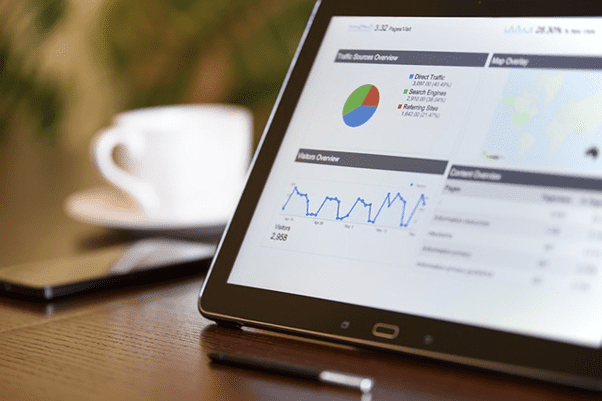
Remote patient monitoring (RPM) relies heavily on data collection and analysis to track patients’ health status. RPM devices, such as blood pressure cuffs, specialized monitors for respiratory diseases, and oxygen therapy devices collect a wealth of physiologic data that is transmitted in real-time to healthcare providers.
Once the data is collected, it needs to be analyzed using sophisticated algorithms that can detect trends or changes in a patient’s condition. This information allows care teams to make timely interventions when necessary and prevent severe complications from arising. Data analysis tools also provide clinical staff with valuable insights into developing customized treatment plans based on individual patients’ unique health conditions.
The key features of RPM platforms related to data collection and analytics are robust reporting capabilities, secure storage mechanisms for confidential medical records, and real-time communication between clinicians and patients. Having access to accurate physiological data helps clinicians support better decisions making about treatment options while reducing operational costs associated with traditional in-person care models.
Finally, integrating RPM technology into electronic health records(EHRs) enables clinicians to access relevant information quickly; thus streamlining workflows leading towards more efficient management practices at every stage of the patient’s journey. By implementing these key features for remote patient monitoring programs correctly hospitals will witness higher reimbursements through more personalized non-face-to-face virtual visits increasing chronic-care-management outcomes significantly.
Notification and Alerts
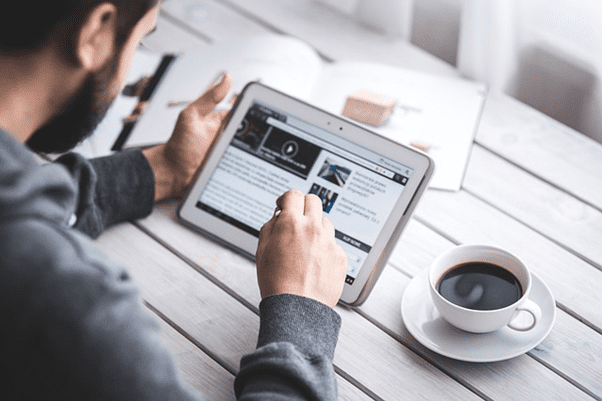
One of the most critical components of RPM is automated notifications and alerts. These features are vital in ensuring timely interventions to prevent adverse health outcomes. When selecting an RPM platform, it is crucial to choose one that offers these features for effective patient management. Connected health devices and platforms provide personalized program tracking, scheduling, and alerting through user-friendly applications.
RPM platforms use digital technologies to monitor patients’ physiological data continuously, providing physicians with daily readings on various health patterns such as blood pressure, glucose levels, oxygen saturation levels among others. In case a patient’s reading exceeds set levels, RPM and IoMT platforms can immediately alert clinicians for timely intervention. This provides prompt care delivery that ultimately leads to improved patient outcomes.
Notification and alerts offer real-time feedback for both patients and healthcare providers alike. With this feature available in RPM programs, clinicians can ensure better disease control while reducing operational costs associated with managing chronic conditions effectively. Patients also benefit from increased awareness of their own health status thus leading to enhanced patient engagement in their own care journey.
Communication and Collaboration Tools
Digital communication and collaboration tools are indispensable for remote patient monitoring (RPM) programs. They enable real-time interactions between patients and healthcare providers, allowing clinicians to offer timely care remotely. CoachCare is an example of a virtual tool suite that facilitates RPM through real-time messaging, video conferencing, content sharing, and other features that emulate in-person visits. These tools help minimize the need for in-person care while ensuring patients receive high-quality care.
One key advantage of using digital communication and collaboration tools for RPM is that they generate large amounts of data on patient health status or treatment progress. This can facilitate informed conversations between patients and physicians around disease management or changing treatments when necessary. By enabling remote sessions that include the exchange of visual cues such as facial expressions or gestures, these technologies also help build rapport between clinicians and their patients.
However, as with any technology used in healthcare settings, it’s important to secure telehealth ecosystems to ensure patient privacy and data security during remote patient monitoring sessions. Regulatory bodies such as HIPAA set standards for protecting sensitive medical information transmitted over telecommunication channels like text messages or email exchanges with patients during RPM sessions. Ensuring compliance among staff members handling personal health information must be part of every organization’s implementation plan to prevent unauthorized access or disclosure of sensitive patient medical data from outside approved contexts.
Integration With Electronic Health Records
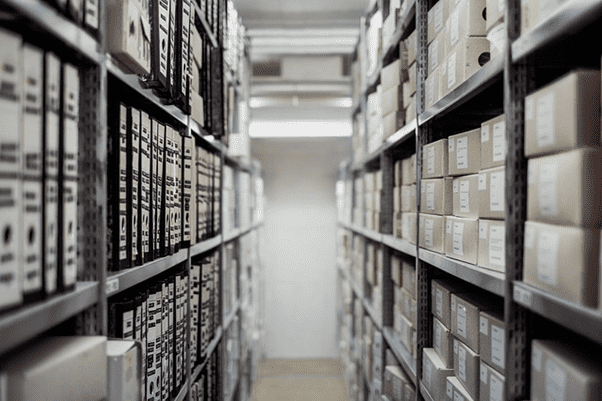
One of the key factors that make remote patient monitoring (RPM) effective is its integration with electronic health records (EHRs). EHR integration enables clinicians to access critical patient data, including vital signs, medications, and allergies in real-time. This integration provides a seamless flow of information between RPM platforms and EHRs for informed decision-making by practitioners.
Furthermore, integrating RPM with EHRs simplifies documentation processes, reducing the workload on clinical staff significantly. Clinicians can view complete patient histories from their devices without relying on paper-based notes or making phone calls to other departments. The ability to gather and store accurate healthcare data is fundamental to improving outcomes because it improves decision quality by enabling more proactive approaches to care delivery.
Moreover, integrating RPM with EHRs empowers patients with greater control over their health management. Patients can access medical reports via online portals conveniently and communicate effectively with their healthcare providers regarding their symptoms or concerns about prescribed treatments. Remote patient monitoring can help individuals manage chronic conditions proactively while allowing them respite from frequent in-person appointments.
Seamless interoperability between RPM platforms and electronic health records will facilitate improved care coordination among healthcare professionals involved in managing high-risk patients’ care plans efficiently. As telehealth initiatives continue driving efficient service delivery across various specialties within the industry; Electronic Health Record Integration needs further implementation as an essential pedestal stone for comprehensive remote medical engagement programs based around robust technology infrastructures suitable for augmenting exceptional medical support services among any growing population group while providing actionable insights into staying healthy throughout one’s lifetime journey towards wellness even after Covid-19 pandemic fades away.
Challenges and Limitations of RPM
Despite its many benefits, RPM still faces challenges and limitations that need to be addressed. From patient acceptance and adoption to privacy concerns, this guide will provide an in-depth analysis of these limitations and how they can be overcome for successful RPM implementation.
Patient Acceptance and Adoption
While RPM has shown promising results in improving clinical outcomes, its effectiveness also depends on how well patients embrace it. One of the significant challenges to patient acceptance is technology literacy, which can be addressed through patient education and training.
Another barrier to broader RPM adoption is privacy concerns. To mitigate these concerns, healthcare organizations must ensure that reasonable measures are taken to secure data transmission and storage while complying with regulatory requirements such as HIPAA.
Despite these hurdles, research has shown that when implemented correctly, nurse-based RPM programs improve patient engagement and reduce hospital readmissions among patients with chronic conditions like congestive heart failure. Such programs empower patients by providing them with real-time access to their health data while enabling clinicians to monitor vital signs remotely- a win-win for both parties.
Technical Issues and Limitations
While RPM can improve patient outcomes, it is important to understand the potential technical issues and limitations associated with this technology. For example, poor internet connectivity or device malfunctions can lead to inaccurate data readings or lost information. Additionally, some patients may struggle with using the devices properly, which could cause problems for both the patient and healthcare staff.
Privacy And Security Concerns

One of the primary concerns related to remote patient monitoring (RPM) is data privacy and security. Cybersecurity threats like data breaches and hacking attempts could potentially expose sensitive medical information. Healthcare providers must prioritize risk management considerations and implement comprehensive cybersecurity features to ensure the proper protection of patient data.
Healthcare organizations can leverage established technical frameworks like the NIST Privacy Risk Assessment Methodology (PRAM). This methodology helps identify potential risks involved with RPM implementation, including identifying any gaps or vulnerabilities in existing information technology infrastructure. By addressing these risks through appropriate safeguards and controls, healthcare providers can mitigate potential cyber-attacks.
While there are valid concerns related to data privacy and security in RPM health systems, establishing strong security protocols will help overcome these challenges. Proper training for clinical staff on maintaining secure communication channels with patients is an essential part of this process; providing patients education on how their health data is being used further strengthens overall trust levels between healthcare providers and their clients.
Operational Costs
Operational costs associated with Remote Patient Monitoring (RPM) are a significant consideration for healthcare organizations. RPM programs require significant investment, from the acquisition of remote monitoring devices to the training and hiring of additional staff to manage patient data. Ongoing maintenance and support must be factored in.
One way healthcare organizations can mitigate operational costs is by partnering with vendors like BlueStar Telehealth which provide remote monitoring devices at no cost to patients or practitioners. This saves on upfront capital expenses and allows RPM programs to be ready for immediate use upon arrival. Additionally, it is crucial to design effective RPM workflows that optimize staff time spent collecting and analyzing patient data so that staffing requirements do not become overly burdensome for the organization.
Future Of RPM
The future of RPM looks promising as advancements in technology and the expansion of telehealth services continue to drive the potential impact on healthcare delivery, with the possibility of further improving patient outcomes and reducing costs.
Advancements In Technology
As the landscape of telehealth continues to evolve, RPM devices are expected to become an increasingly essential part of that landscape. Healthcare systems will continue integrating these tools into their operations and encourage patients who need close monitoring to adopt them at home. Furthermore, future iterations of this technology could potentially improve how physicians treat chronic illnesses while providing better care management options for patients worldwide.
Expansion Of Telehealth Services
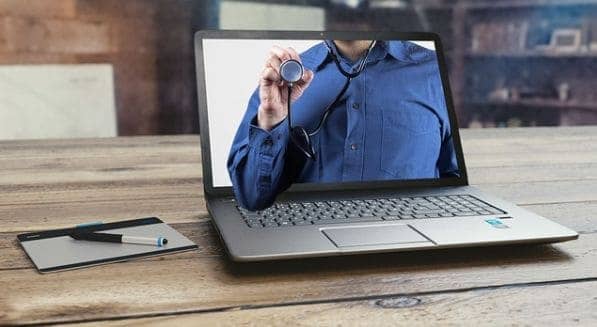
The expansion of telehealth services has played a significant role in the growth and adoption of remote patient monitoring. With the pandemic, many healthcare providers shifted to using virtual care models for routine appointments and consultations. This trend is expected to continue as patients are more familiar with telehealth services.
As RPM becomes more prevalent, we are also beginning to see increased interest from payers in reimbursing for these services. The AMA’s RPM Playbook provides guidance on coding and billing practices for remote patient monitoring programs. This has helped expand access to these valuable care tools for high-risk patients suffering from chronic diseases such as heart failure or diabetes.
Conclusion
Remote patient monitoring is a cutting-edge technology that benefits both patients and healthcare providers. With RPM, physicians can monitor their patients’ conditions remotely, allowing for more timely interventions and potentially reducing hospital readmissions.
Patients benefit from increased engagement in their own care and improved health outcomes. While implementing an RPM program can be challenging, following best practices, and ensuring regulatory compliance will lead to successful implementation. As telehealth continues to expand rapidly, leveraging the power of RPM technology will undoubtedly play an increasingly critical role in delivering high-quality healthcare services across the world.
Further Reading
AMA Remote Patient Monitoring Playbook
Remote Patient Monitoring Playbook implementation | American Medical Association
Original research: Factors influencing the effectiveness of remote patient monitoring interventions: a realist review – PMC
Impact of remote patient monitoring on clinical outcomes: an updated meta-analysis of randomized controlled trials – PMC
Remote patient monitoring needs clinical intervention to ensure success
Privacy Risk Assessment Methodology (PRAM) – Glossary | CSRC

